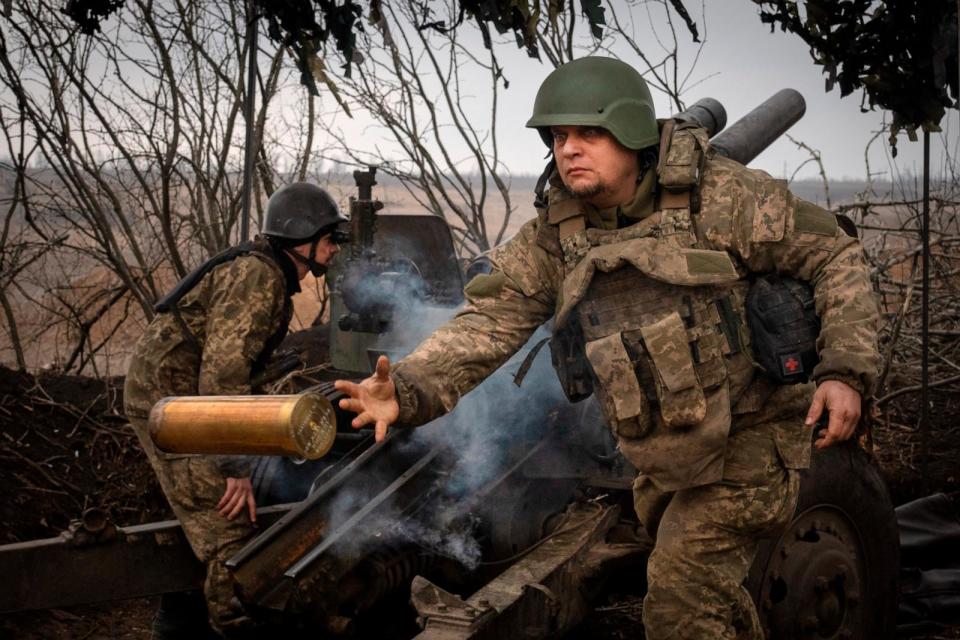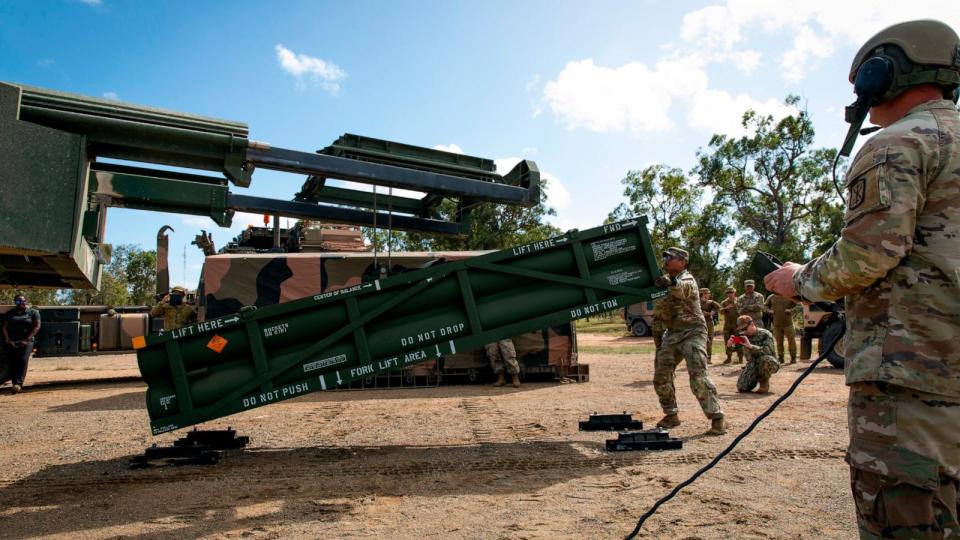US secretly sent long-range missiles to Ukraine to use against Russian invaders: Officials
The Pentagon confirmed Wednesday the U.S. had secretly provided Ukraine with a long-range Army Tactical Missile System that can reach deep into Russian-occupied areas -- or even strike more deeply into Russia itself, potentially provoking a response from the Kremlin, though America intends them only for use in occupied territory.
The missiles, also known as ATACMS, have a maximum range of 186 miles. Ukraine first used them over the past week, two U.S. officials said.
In October, America provided Ukraine with mid-range versions of the ATACMS, which have a minimum range of 43 miles. But Ukraine continued to press the Biden administration to provide longer-range versions.
The White House's national security adviser, Jake Sullivan, told reporters on Wednesday afternoon that in February, President Joe Biden directed his team to provide Ukraine with a "significant" number of ATACMS missiles for use inside Ukrainian territory -- against Russian invaders.
Sullivan said those shipments started moving in March.
Biden "quietly directed his national security team to send ATACMS," Pentagon spokesman Maj. Charlie Dietz told ABC News.
In mid-March, at a time when Ukraine military aid funding was stalled in Congress and Russia was making incremental gains on the battlefield, the Pentagon cobbled together an emergency $300 million package from savings from contracts to replace existing weapons systems provided to Ukraine.
U.S. officials are now acknowledging that the package secretly contained a shipment of ATACMS but it was not disclosed that they were longer range versions of the missiles.
"When the President approved the provision of ATACMS in February, he asked his team to do so discreetly and they were transferred quietly to Ukraine in order to maintain operational security," Dietz, the Pentagon spokesman, said.

"We did not announce that we were providing Ukraine with this new capability at the time in order to maintain operational security for Ukraine at their request," Dietz said. "I will defer questions about their potential use to Ukraine since they should speak for their own military operations." (A source close to the commander in chief of the Ukrainian army and a military intelligence source confirm the ATACMS were first used last week in an attack on Crimea.)
Sullivan, at the White House briefing, was frank about how the U.S. sees the potential impact of the new weapons.
"There is no silver bullet in this conflict. One capability is not going to be the ultimate solution," he said. "It is an amalgamation of capabilities that come together and combined with the bravery and skill of Ukraine's fighters that's going to make the difference in this conflict."
Retired Gen. Robert Abrams, an ABC News contributor, said ATACMS make a material difference on the battlefield, changing the "geometry" of the fight, but Ukraine's precision and its target judgments are x-factors.
"It makes a big explosion," Abrams said of the missiles. "So they [the Ukrainians] have a list of what we call high-value targets, things that are most important to the Russian war-making machine. They have to translate that high-value target list to a high-payoff target list."
"If they use them right, it can set the Russian campaign back a little," he said.
Sullivan was pressed at Wednesday's briefing by ABC News Senior White House Correspondent Selina Wang on whether the ATACMS could be seen as provocative by Russia, who have warned against their use in the past.
He said the Russians have accepted long-range missiles from countries including North Korea.
"They have used those on the battlefield," he said. "They have used them to attack Ukrainian civilians as well."

Two U.S. officials confirmed to ABC News that the longer-range missiles were employed over the last week. One of the officials said the ATACMS were first used in a strike deep into the Crimean Peninsula, which Russia illegally annexed a decade ago, and in another attack on Tuesday near Berdyansk.
Officials said the Biden administration previously hesitated in providing the longer-range versions over concerns that it might impact the supply of the missiles that the Pentagon has on hand.
"Up until recently, and as we have said on many occasions, we were unable to provide long-range ATACMS to Ukraine because of readiness concerns," said Dietz. Sullivan echoed that point as well.
"But behind the scenes, the Administration has been working relentlessly to address these concerns," Dietz said.
More broadly, since Russia's invasion began in 2022, America has temporarily resisted Ukrainian requests for other munitions and aid, including F-16 fighter jets or certain kinds of tanks, with officials saying they were not immediately suited to Ukraine's needs or could escalate the conflict to engulf more of the region.
Ultimately, however, the U.S. has continued to supply Ukraine with a wide range of aid in its fight, in part because of Russia's continued onslaught.
Russia's use of ballistic missiles, provided by North Korea, seemed to factor into the Biden administration's new willingness to provide Ukraine with long range ATACMs.
Ukraine had been desperately requesting air defense systems to counter Russia's increased attacks on Ukrainian cities.
Dietz noted on Wednesday how the U.S. "had warned Russia against acquiring North Korean ballistic missiles and against renewing its attacks against Ukraine's civilian infrastructure."
Separately on Wednesday, Biden signed a $95 billion aid package that includes military assistance for Ukraine, Israel and Taiwan.
His signature triggered a $1 billion emergency military aid package to Ukraine that included additional air defense systems and artillery ammunition to restore Ukraine's depleted supplies and Bradley fighting vehicles.
ABC News' Chris Boccia, Yulia Drozd and Fritz Farrow contributed to this report.
US secretly sent long-range missiles to Ukraine to use against Russian invaders: Officials originally appeared on abcnews.go.com

